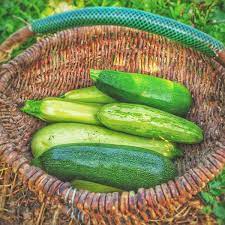There are few vegetables as versatile as zucchini, one of the most consumed vegetables in Spain and that cannot be missing in any pantry. The same goes for making a creamy, warm cream with which to combat the cold with a spoon, which becomes one of the crunchy additions to any wok or even a complete dish when you fill them and give them a hit in the oven. But not all zucchini have the same smooth and uniform appearance on their skin, but some arrive at our house with small lumps. Why is that?
The zucchini, zucchino or zucchini is a plant of the cucurbitaceae family, whose fruit is used as food and can measure 10 meters in length. It has large unisexual yellow flowers that are a delicacy in contemporary cuisine. Its fruits, zucchini, vary in size depending on the variety and have a thin, smooth shell with a variable color, lighter if planted in spring or summer. No consensus has been reached on the origin of the crop, which could have come to us from India or South America.
It is grown throughout our country, sowing directly in the ground and having to protect it from the cold with plastic while the temperatures do not soften. Zucchini are on the market all year round, reminds the Spanish Nutrition Foundation (FEN), recommending their consumption between November and August, and highlighting that they are a source of nutrients such as vitamin C – an average zucchini provides 26% of the recommended daily intake―, potassium or mucilage, which make them more digestive. It is one of the vegetables with the fewest calories, providing a lot of water and somewhat less fiber than pumpkin.
Zucchini yellow mosaic virus
It has been the doctor in Food Science and Technology, Miguel Ángel Lurueña, a pioneer in dissemination with his blog Gominolas de Petróleo, who has given the first strokes to clarify where these protuberances come from and even show an image for those who do not see them. have seen. He has explained on his social networks that a virus that “is transmitted between crops through aphids or cutting tools” and responds to the acronym ZYMV (Zucchini Yellow Mosaic Virus, the zucchini yellow mosaic virus, in Spanish) .
However, the expert highlighted that “in principle, it does not pose any health problem because this type of virus only affects plants and not humans.” ZYMV is one of the examples of emerging viruses in plants, which was first isolated in Italy and then in France in the 1970s. It has spread throughout the world in a few years, causing serious epidemics in some areas. and its appearance is limited to between 120 and 770 years, according to the analysis of molecular evolution, although its origin remains uncertain.
In Spain it was detected for the first time in the 90s, in a cucumber crop in Almería, since it also affects this vegetable and watermelon and pumpkin. The most frequent symptoms, in addition to the lumps that Lurueña talked about, also include bright and soft mottling, the appearance of star-shaped spots on young leaves, narrowing of nerves and deformations such as bulging. The form of transmission is through contact between a diseased plant and a healthy one, which can be caused by the wind itself as well as by the workers’ hands, their clothing or work tools.
Experts advise preventing it with crop rotation, immediate elimination of plants affected by the virus and disinfection of greenhouse structures and tools. They also list that it would be important to replace CO2 hoses, soil plastics and cover fabric during crop change. The ZYMV virus is located in cucurbits in almost all production areas in the world, but the frequency varies depending on the region, with its impact being more intense in tropical and subtropical regions, and less in temperate countries such as France.













